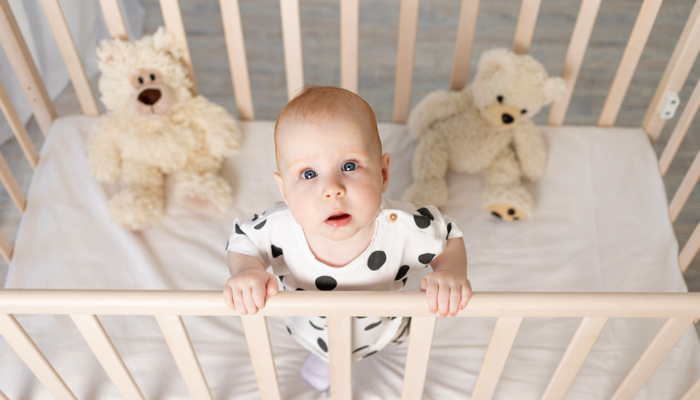Choosing the right crib for your baby is one of the most important decisions you’ll make as a new parent. A crib is more than just a place for your baby to sleep; it’s a central piece of furniture in your nursery that needs to be both safe and stylish. In this guide, we’ll explore essential factors to consider when selecting a crib, including safety standards, design options, and practical features.
Understanding Safety Standards
Safety should be your top priority when choosing a crib. Ensure that the crib meets the latest safety standards set by regulatory bodies. In the U.S., for example, the Consumer Product Safety Commission (CPSC) mandates specific safety requirements for cribs, including slat spacing, crib height, and mattress support. Check that the crib has no sharp edges or corners, and that the paint and finishes are non-toxic. Additionally, make sure the crib is free of any recalls and has been tested for stability.
Types of Cribs
Cribs come in various types, each with its own set of features and benefits. The most common types include:
- Standard Cribs: These are the most traditional and come in a variety of styles and finishes. They are usually sturdy and durable but are not convertible.
- Convertible Cribs: These versatile cribs can be converted into a toddler bed, daybed, or even a full-sized bed as your child grows. This feature can be a cost-effective option in the long run.
- Mini Cribs: Ideal for smaller spaces, mini cribs are compact and portable. They are perfect for apartments or when traveling but may have a shorter lifespan due to their size.
- Portable Cribs: Also known as travel cribs, these are lightweight and easy to set up and take down. They are a great choice for families who frequently move or travel.
Design and Style
The design and style of the crib can significantly impact the overall look of your nursery. Cribs are available in various styles, including modern, classic, rustic, and contemporary. Consider the existing decor of your nursery and choose a crib that complements the theme. The color and finish of the crib should also match other furniture pieces in the room. Additionally, consider the crib’s design features, such as adjustable mattress heights, drop-down sides, and decorative elements.
Material and Construction
The material and construction of the crib are crucial for both safety and durability. Most cribs are made from wood, metal, or a combination of materials. Wooden cribs are traditional and can be made from hardwoods like oak or maple, which offer durability and a classic look. Metal cribs are often more modern and can be easier to clean. Regardless of the material, ensure that the crib is well-constructed and free from any potential hazards, such as loose screws or sharp edges.
Mattress Considerations
Choosing the right mattress is as important as selecting the crib itself. The mattress should fit snugly within the crib without any gaps between the mattress and the crib sides. It should also be firm to provide the proper support for your baby’s developing body. Look for mattresses that are made from non-toxic materials and are easy to clean. Additionally, consider a waterproof mattress cover to protect against spills and accidents.
Practical Features
Practical features can add convenience and functionality to your crib. Some cribs come with built-in storage drawers or shelves, which can help keep essential baby items organized. Also, consider whether you need a crib with wheels or locking casters for easy movement and stability.
Budget Considerations
Crib prices can vary widely depending on the brand, material, and features. Set a budget that aligns with your financial situation and stick to it while considering the long-term value of the crib. Remember that a higher price does not always guarantee better quality, so prioritize safety and durability over aesthetics and brand name.
Maintenance and Care
Regular maintenance and care are essential to ensure the longevity of your crib. Follow the manufacturer’s instructions for cleaning and maintaining the crib. Regularly inspect the crib for any loose parts or wear and tear, and address any issues promptly to ensure ongoing safety for your baby.
Choosing a Brand: Spotlight on Babymore
When selecting a crib, consider reputable brands known for their quality and safety standards. With many years of experience in design and manufacture, Babymore offers a range of award-winning products, including cribs, cot beds, mattresses, prams, pushchairs, and car seats. Their commitment to quality and safety makes them a reliable choice for parents looking for stylish and durable nursery solutions.
Conclusion
Selecting the perfect crib involves balancing safety, style, and practicality. By understanding the safety standards, exploring different types and designs, and considering practical features, you can make an informed decision that ensures both the well-being and comfort of your baby. Investing in a high-quality crib from a reputable brand like Babymore can provide peace of mind and a beautiful addition to your nursery.




